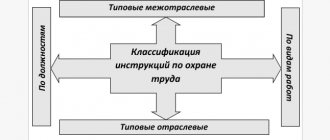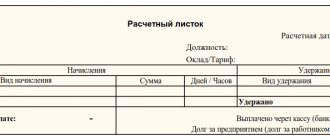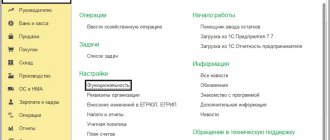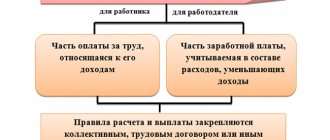What is bonus depreciation of fixed assets
As a general rule, money spent on the purchase or creation of a fixed asset (FPE) is not written off as current expenses, but is included in the initial cost of the object.
But paragraph 9 of Article 258 of the Tax Code of the Russian Federation allows organizations to write off part of the amount as expenses (this is a depreciation bonus), and include the remaining funds in the initial cost. As a result, the income tax of the current period is reduced. Keep records of depreciable property for free according to the new rules
The same applies to the costs of completion, additional equipment, reconstruction, modernization, technical re-equipment, and partial liquidation of operating systems.
IMPORTANT. Bonus depreciation is only possible in tax accounting (TA). It is not provided for in accounting. Therefore, in accounting, the costs of acquiring (construction, modernization, etc.) an object are fully used to form the value of the asset.
You cannot apply depreciation premium if the property:
- received free of charge (clause 9 of article 258 of the Tax Code of the Russian Federation);
- identified during inventory (letter of the Ministry of Finance dated December 29, 2009 No. 03-03-06/1/829);
- received from the founders as a contribution to the authorized capital (letter of the Ministry of Finance dated June 19, 2009 No. 03-03-06/2/122);
- refers to objects for which an investment deduction was applied (clause 7 of Article 286.1 of the Tax Code of the Russian Federation);
- is the subject of leasing and is recorded on the balance sheet of the lessee (letter of the Ministry of Finance dated March 10, 2009 No. 03-03-05/34);
- does not apply to depreciable objects.
REFERENCE . Can a lessee apply bonus depreciation to permanent leasehold improvements? The Ministry of Finance traditionally states that it cannot (see, for example, letter dated 10/12/11 No. 03-03-06/1/663). Judges, on the contrary, reserve this right for tenants (decision of the Supreme Court of the Russian Federation 09.09.14 No. 305-KG14-1382).
Check the financial condition of your organization and its counterparties
How is the indicator taken into account in tax accounting?
When calculating income tax, the company's expenses take into account:
- 30% of the price at which the assets were accepted for accounting, but this limit applies to fixed assets classified as 3-7 depreciation groups;
- 10% of the book price for assets belonging to other groups.
Important! The depreciation bonus can only be used for property acquired during the preparation of compensated contracts or obligations.
Due to the fact that this tax is indirect, it is taken into account in the period when the process of natural depreciation of assets began.
Premium amount by type of operating system.
For example, a company bought equipment whose cost is 840 thousand rubles, and VAT in this case is 80 thousand rubles. The initial cost of the asset is: 840-80=760 thousand rubles.
Such equipment belongs to the third group of depreciation, therefore 30% of the purchase price is included in expenses. The bonus is calculated: 760,000*30%=228 thousand rubles.
This amount is added to the cost of the month following the month in which the equipment is first used by the company. Depreciation will be accrued from: 760-228 = 532 thousand rubles.
Is it possible not to use bonus depreciation?
The head of each organization himself decides whether the depreciation bonus will be applied in the reports or not. It is often considered more profitable to refuse this benefit, for which the refusal to accrue must be stated in the standards on the basis of which tax accounting is carried out in the company.
Important! Each organization requires certain regulations and other internal regulations on the basis of which tax accounting is regulated.
After written registration of the refusal to apply the bonus, it will not be possible to further change the decision.
How various controversial issues are resolved
Difficulties often arise when leasing certain property. This is due to the fact that companies do not take into account the received objects as their own assets, since they use them only temporarily, and also do not become their full owner.
The Ministry of Finance claims that the transferred objects are not considered the company's fixed assets, since they are not used in the production of goods.
Difficulties also arise when accounting for bonus depreciation during accounting and tax accounting.
The advantages of using this indicator include the opportunity to reduce income tax when a company purchases equipment of significant value. But there is a benefit only in a situation where the company does not plan to sell this property in the near future.
Maximum amount of depreciation bonus
For objects that belong to the first, second and eighth to tenth depreciation groups, it is no more than 10% of the original cost. In the case of modernization (completion, etc.) - no more than 10% of the costs for these activities.
For objects of the third to seventh groups, the depreciation bonus is no more than 30% of the original cost, or the cost of modernization, etc.
If the property is not included in any of the groups provided for by the OS Classification (approved by Decree of the Government of the Russian Federation dated 01/01/02 No. 1), the organization itself determines the useful life and appoints a group. Further, it is permissible to take into account the depreciation premium according to the general rules (letter of the Ministry of Finance dated May 24, 2018 No. 03-03-06/1/35167).
ATTENTION. The organization is obliged to establish in its accounting policies the procedure for applying bonus depreciation. You need to specify its size and the criteria by which it will be used in relation to all or individual operating systems. If this is not done, the tax authorities will deny the right to the bonus (letter of the Ministry of Finance dated October 30, 2014 No. 03-03-06/1/55106).
Get a free sample accounting policy and do accounting in a web service for small LLCs and individual entrepreneurs
Common mistakes
Error: The enterprise sold property that was listed as a fixed asset in respect of which a depreciation bonus was applied, and did not reduce the profit from its sale by the amount of the bonus.
Comment: If the company's accounting policy involves the use of a depreciation bonus, when selling the property to which it was applied, revenue must be reduced by the amount of the bonus without fail.
Error: The accountant applied bonus depreciation in relation to fixed assets that were donated to the company.
Comment: The law allows the depreciation bonus to be applied only if the property was received under compensated contracts and obligations.
How to calculate bonus depreciation
You need to take the initial cost of the object (or the amount of modernization costs, etc.) and multiply it by the rate fixed in the accounting policy.
The bet should not be higher than the maximum size.
Example 1
The accounting policy reflects that the costs of purchasing fixed assets from the second depreciation group are taken into account as follows: 90% relates to the original cost, 10% to current expenses.
The company purchased a laser printer worth RUB 120,000. (excluding input VAT). The accountant wrote off a depreciation bonus in the amount of 12,000 rubles (120,000 rubles × 10%) as expenses.
The initial cost of the printer was 108,000 rubles (120,000 rubles × 90%).
Drawing up an order on accounting policies
The Tax Service prohibits the owners of an organization from independently applying bonus depreciation at their own discretion.
If the owner of the organization has decided to use bonus depreciation of fixed assets, then a special order should be issued for this purpose, where the accounting policy will reflect the use of such a function, otherwise the tax inspectorate will be interested in such violations.
The chief accountant of the company is responsible for monitoring the execution of the order. The procedure for maintaining tax and accounting records will be reflected in the order, and an additional provision to the order is the provision on the accounting policy of the organization.
The text of the order should have the following points:
- A unique registration number, which should not coincide with other personnel orders; they have a separate account.
- The name of the organization, which indicates the form of the organizational and legal structure.
- Place of signing the contract, date.
- Deadline for approval of accounting policies. Often such documents are drawn up for the next calendar year, the date falling on the last working day.
- Text of the order.
- Approved words of accounting policy that apply for the next year.
- Responsibilities of employees who are responsible for the execution of tax and accounting records.
- Full name and position of the employee who is responsible for the execution of the letter.
- Full name, as well as managerial position of the employee who has the right to sign such a document. Signature.
If possible, the company seal must be affixed. The annex to the order will be the provision itself, which is applied in the accounting policy.
This document will describe the application of bonus depreciation to fixed assets.
Posting bonus depreciation in accounting
Due to the fact that depreciation premium cannot be used in accounting, the initial cost of an object in accounting differs from the same indicator in tax accounting. According to PBU 18/02 “Accounting for calculations of corporate income tax”, a difference arises between accounting accounting and NU. This difference is temporary, because at the end of the useful life of the fixed asset it will become equal to zero.
This temporary difference is taxable, since the book value of fixed assets in accounting is greater than in tax accounting.
The company must show this taxable difference at the end of the accounting year and then compare it with the temporary difference at the end of the previous year. Depending on the result obtained, you need to create one of four transactions (for more details, see: “Instructions for the new edition of PBU 18/02 “Accounting for calculations of corporate income tax”, which must be applied from 2021”):
- reflect the deferred tax asset (DTA);
- reflect deferred tax liability (DTL);
- extinguish IT;
- extinguish IT.
Example 2
In 2021, the organization bought a laser printer for 120,000 rubles. (excluding input VAT). Useful life - 30 months.
When putting the printer into operation, the company applied a depreciation bonus of 10%. It is equal to 12,000 rubles (120,000 rubles × 10%).
In 2021, the object was depreciated for 3 months, in 2021 - 12 months.
The company has no liabilities or other assets.
Maintain accounting and tax records, submit OSNO reports via the Internet
Determination of temporary differences at the end of 2019 and at the end of 2021
BOO WELL Initial cost 120,000 rub. RUB 108,000 (120,000 - 12,000) Monthly amortization RUB 4,000 (RUB 120,000: 30 months) RUB 3,600 (RUB 108,000: 30 months) Depreciation in 2021 12,000 rubles (4,000 rubles x 3 months) RUB 10,800 (RUB 3,600 × 3 months) Book value as of 12/31/19 RUB 108,000 (120,000 - 12,000) RUB 97,200 (108,000 - 10,800) The taxable temporary difference as of December 31, 2019 is RUB 10,800 (108,000 - 97,200) Depreciation in 2021 RUB 48,000 (RUB 4,000 × 12 months) RUB 43,200 (RUB 3,600 × 12 months) Book value as of 12/31/20 RUB 60,000 (120,000 - 12,000 - 48,000) RUB 54,000 (108,000 - 10,800 - 43,200) The taxable temporary difference as of December 31, 2020 is RUB 6,000. (60,000 - 54,000) Since both temporary differences (at the end of 2021 and at the end of 2019) are taxable, the accountant added them up and reflected IT.
On December 31, 2021, the accountant made the following entry:
DEBIT 68 CREDIT 77
- 3,360 rubles ((10,800 rubles + 6,000 rubles) × 20%) - IT is reflected
Tax accounting of bonus depreciation
According to the rules of NU, the depreciation bonus is classified as indirect expenses. They must be reflected in the reporting (tax) period in which the start date of depreciation of the object falls. This is stated in paragraph 3 of Article 272 of the Tax Code of the Russian Federation.
Let's show it with an example. Let's say the fixed asset was put into operation in March 2021. Then depreciation on it is calculated from April 2021. This means that the depreciation premium must be taken into account in April, that is, in the first half of 2021.
Maintain tax and accounting records of fixed assets according to the new rules
Main distinctive characteristics
Characteristics of fixed assets, which are distinctive in that:
- Must apply to all objects unless there are exceptions.
- The depreciation bonus can apply both to initial costs and to improving work, or reconstruction, or improving the operating system, or other similar manipulations.
- It is prohibited to use objects that were received by the owners free of charge, when this is equated to an investment.
- According to Article 272, paragraph 3 of the Tax Code, it is stated that it applies to changes in the initial cost in the case of reconstruction, or is recognized as an indirect expense for depreciation.
- When the total cost numbers change in the following depreciation calculations.
- When calculating depreciation expenses using one of the methods - linear, non-linear, if this reduces the original cost.
- It is necessary to accrue the amount of the depreciation bonus that was previously. To do this, it is necessary to contribute non-operating profit from the moment of introduction into sale. This action should be taken if the implementation of the OS for interdependent persons takes place within 5 years, the countdown is made from the moment of start of use.
Restoration of bonus depreciation
If the asset is sold to a related party before the expiration of 5 years from the date of commissioning, the depreciation bonus must be restored. That is, attribute it to non-operating income of the period in which the property was sold (clause 9 of Article 258 of the Tax Code of the Russian Federation).
The Ministry of Finance in a letter dated December 23, 2014 No. 03-03-06/1/66590 explained: in case of an “early” sale, the residual value of the property must be increased by the amount of the restored premium.
But it is impossible to recalculate previously accrued depreciation based on the increased cost of the object (letter of the Ministry of Finance dated March 16, 2009 No. 03-03-06/2/142).
Example 3
The company purchased and put into operation office equipment for RUB 120,000. (excluding input VAT). RUB 12,000 was written off for expenses at a time. (RUB 120,000 x 10%). The initial cost of the object in NU is 108,000 rubles (120,000 - 12,000).
Useful life - 30 months. Monthly depreciation - 3,600 rubles (108,000 rubles: 30 months).
After 12 months, the property was sold to a related party for RUB 90,000. (excluding VAT). During this time, depreciation amounted to 43,200 rubles. (RUB 3,600 x 12 months).
The accountant restored the depreciation bonus, but did not recalculate the depreciation. As a result, the residual value was 76,800 rubles (108,000 - 43,200 + 12,000).
The profit from the sale is 13,200 rubles (90,000 - 76,800).









